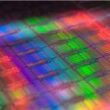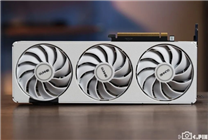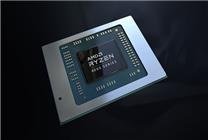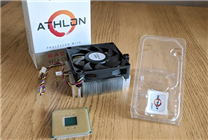The Intel Arc B580: A Game-Changer in the Mid-Range GPU Market
Summary:
- Intel’s Arc B580 challenges NVIDIA’s dominance in the mid-range GPU category.
- In initial benchmarks, the Arc B580 outperformed the NVIDIA RTX 4060 in various scenarios.
- This review explores the performance of the B580 in gaming and productivity applications.
Last month, significant news shook the tech industry with Nvidia’s announcement of a $5 billion investment to acquire a portion of Intel’s shares. This partnership comes at a time when Intel has struggled to maintain its competitive edge against AMD in CPUs and found itself outmatched by Nvidia in the GPU market. Despite these challenges, the situation offers Intel an opportunity for rejuvenation.
Amidst this backdrop, we turn our focus to Intel’s latest offering—the Arc B580 GPU. This graphics card is positioned as a competitor to Nvidia’s popular RTX series, particularly in the entry-level segment.
An Unexpected Contender
Our review commenced when a colleague, looking to upgrade his existing setup, considered the latest entry-level Nvidia GPU, the RTX 5050, priced at $2,099. However, he quickly discovered that its performance fell short compared to the RTX 4060, prompting us to reevaluate options in a similar price bracket. Surprisingly, we found that the neglected Intel Arc B580 presented itself as an excellent alternative.
Testing the Waters
The B580’s evaluation wasn’t originally planned; however, we believed it deserved attention, especially given Intel’s recent foray into the GPU space. Pairing the B580 against the RTX 4060 allowed us to gauge its performance comprehensively.
Intel’s Arc B580 boasts specifications that are competitive, setting the stage for an intriguing showdown. Below, we present a comparative snapshot of key specifications:
- Intel Arc B580: 12GB VRAM, 192-bit bus, 456 GB/s bandwidth.
- NVIDIA RTX 4060: 8GB VRAM, 128-bit bus, 272 GB/s bandwidth.
Benchmark Analysis
When we dived into performance benchmarks, the Arc B580 outperformed the RTX 4060 across all four 3D Mark testing scenarios. With a significant margin in scores, it set a precedent for future comparisons. The Arc B580’s triumph over NVIDIA in multiple tests indicates that it should not be dismissed as a mere entry-level contender.
Nvidia has long maintained an edge due to superior driver updates and enhanced software features, such as DLSS, which improve gaming experiences. However, in real-world applications, particularly in graphics productivity, NVIDIA continued to reign supreme.
Game Performance: Wings and Woes
Our gaming tests led us down an unexpected path. Starting with the demanding “Cyberpunk 2077,” the B580 consistently outperformed the RTX 4060 when ray tracing was not enabled. When turned on, both cards struggled, but the B580 displayed unexpected resilience, outperforming the 4060 in some scenarios.
However, the opposite held true in the highly anticipated “Black Myth: Wukong,” where the RTX 4060 solidly eclipsed the B580, especially when equipped with DLSS. In scenarios with ray tracing enabled, the performance gap widened further, showcasing Nvidia’s historical advantage in optimizing their cards for demanding titles.
Online Gaming Insights
When evaluating popular online titles, performance differences between the two cards became nuanced. Both GPUs displayed comparable performance, with the B580 slightly edging out in “Counter-Strike: Global Offensive” but falling short in “Marvel Confrontation.”
AI Benchmarking
A surprising test was conducted with AI frameworks where the B580 registered a speed of 24.22 tokens/s compared to the RTX 4060’s 8.53 tokens/s. The B580’s advanced specs cater to users building AI models, marking it as potentially more suitable for this niche.
Conclusion: A Fresh Competition
The Intel Arc B580 signifies a critical pivot in Intel’s strategy, demonstrating that it can effectively compete in the mid-range GPU market. While it may not yet fully rival the established giants like NVIDIA, the B580 has shown promising results, particularly for cost-conscious consumers and those focused on productivity.
In a landscape with renewed competition, consumers stand to benefit significantly. As Intel continues refining its drivers and optimizing performance, the Arc series may well be an essential player in the evolving GPU market.
The B580 is not without its challenges, but it has proven that quality and affordability can coexist. As the demand for diverse GPU options grows, we look forward to what Intel can offer in the future.







